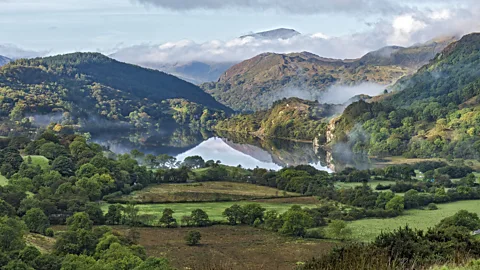For a small country, the United Kingdom packs a hefty punch when it comes to the diversity and beauty of its landscapes.
For proof, you only need look at the 15 national parks found across England, Scotland and Wales (there are no national parks currently in Northern Ireland), which change dramatically from the towering peaks of the Cairngorms to the sprawling waterways of the Broads, from the gently rolling South Downs to the broad beaches of the Pembrokeshire coast.
This year is the 75th anniversary of the National Parks and Access to the Countryside Act 1949, which led to the creation of the UK’s national parks, starting with the Peak District in 1951. The visionary legislation secured access-for-all to open countryside, while also serving to protect precious wildlife and places of immense natural beauty.
A concept imported from the United States (Yellowstone, established in 1872, was the world’s first national park), the UK’s national parks were “the culmination of political battles that had been fought for decades”, says Carey Davies, hiker, naturalist and author of the new book National Parks Of The United Kingdom (Ithaka Press). “The Industrial Revolution made the British the world’s first predominantly urban population. It’s vital that people have breathing spaces and retain our connections to the land. But the idea that nature is good for people and that people needed access to the countryside was particularly pronounced after the UK had been through the horrors of World War Two. There was an exhausted population. Britain can feel like a crowded place in our cities but national parks can be oases of calm and space.”
Today, the UK’s national parks are popular, highly valued places to unwind, hike, climb, cycle and paddle. “They’re also refuges for rare wildlife, plants and distinctive habitats, and they have a vital role to play in addressing some of the most pressing challenges our country faces, such as biodiversity loss, climate change and wellbeing,” says Davies. “We need our national parks now more than ever.”
Here, Davies selects the UK’s five most beautiful national parks, perfect places for adrenaline-rush adventures, wonderful wildlife and soul-restoring peace and contemplation.
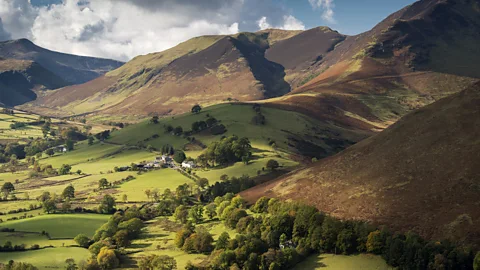 Ross Hoddinott/Nature Picture Library
Ross Hoddinott/Nature Picture Library1. Lake District National Park, England
It’s the “relationship between the sublime and the cosy” that draws millions of people to northern England’s Lake District every year, suggests Davies. The UK’s most visited park, designated a Unesco World Heritage site in 2017, the Lake District has hulking mountains and glacially carved lakes that sit alongside human-altered landscapes including patchworks of dry stone-walled fields and sheep farms. “Sheep farming is part of the park’s heritage and history,” says Davies. “It’s been there since the Vikings,” though he acknowledges criticism from environmentalists that over-farming has been bad for nature in the park.
The Lake District has inspired writers from William Wordsworth to Beatrix Potter. “We think of mountains as inspiring, rejuvenating palaces rather than hostile wastelands, and that’s an influence from the Romantics,” says Davies. “People come from all over the world to the Lake District, where Beatrix Potter’s former house is, which is testament to how enduring her works are.”
Sedate boat cruises on lakes including Windermere, Derwentwater and Ullswater are the order of the day, though wild swimming and stand-up paddling are livelier, more up-close options. The park can get busy and congested, especially in summer, but at 2,362sq km and with plenty of peaks that coach tours can’t reach, it’s possible to find seclusion and perhaps inspiration for your own poem or story.
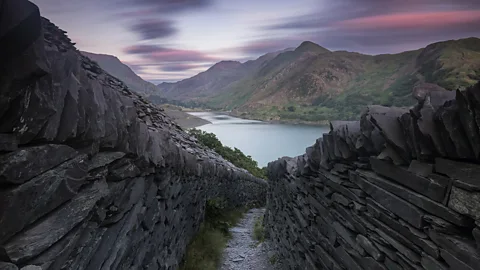 Dilwyn Williams
Dilwyn Williams2. Eryri (Snowdonia) National Park, Wales
In 2022, the Snowdonia National Park Authority committee voted to use the Welsh names Yr Wyddfa (Snowdon) and Eryri (Snowdonia) to refer to Wales’ highest mountain and the national park, rather than the English names – a move followed more recently with the changing of the Brecon Beacons to Bannau Brycheiniog.
This region of north-west Wales offers “spectacular dramatic mountain landscapes, which makes it a fantastic place for adventure: climbing, scrambling and adventurous walking,” says Davies. “The natural architecture of the Snowdon massif, including Yr Wyddfa (Snowdon), the Glyderau and Cader Idris, is often more jagged and angular than the Lake District. The rock erodes into incredible formations, such as Castell y Gwynt.”
But Eryri isn’t just about rock – there are also temperate rainforests, known as Celtic rainforests, and Arctic alpine plants such as alpine meadow-grass.
“The human dimension is also part of the area’s beauty, such as Harlech Castle, perched on hills near the Snowdonia coast,” adds Davies. Writers have found inspiration here, too. “There’s a collection of 11 medieval Welsh stories called The Mabinogion. A lot of landmarks mentioned in it are in Eryri, so you can read the stories and then go to the places mentioned,” Davies says. “There’s also a popular legend that if you sleep on Cader Idris, you’ll wake up as a poet or a madman. Literature and myths form a beautiful part of this national park’s landscapes.”
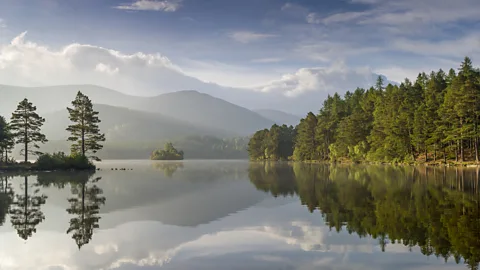 Scotland The Big Picture/Nature Picture Library
Scotland The Big Picture/Nature Picture Library3. Cairngorms National Park, Scotland
High up in Scotland’s north-east, the Cairngorms is the largest national park in the UK – at 4,528sq km, it’s nearly twice as big as the second largest, the Lake District. Its sheer scale means it has a massive appeal for hikers, bikers and other adventurous outdoor lovers.
It’s also the UK’s wildest, snowiest national park, with an austere beauty in parts. “The Cairngorms has enormous whale-back granite mountains that form a kilometre-high plateau, one of the UK’s most hostile landscapes, with winds that can reach 170mph,” says Davies. “But you still find wildlife, including snow bunting, ptarmigan and mountain hares.”
There are also remnants of the Caledonian forest that once covered Scotland but was decimated by humans. “In the Cairngorms, you can walk for hours through native forest,” says Davies, “or stand on the shore of Loch Eilein and look at pine forest with sub-Arctic mountains behind, where you really feel the affinity of the landscape with Scandinavia, North America and Siberia.”
Work is currently underway to help “rewild” areas of the Cairngorms. The national park is already home to remarkable wildlife, including pine martens, wildcats, golden eagles and endangered capercaillies, with ongoing debates about bringing back other native species to rebalance the ecosystem, including lynx and wolves.
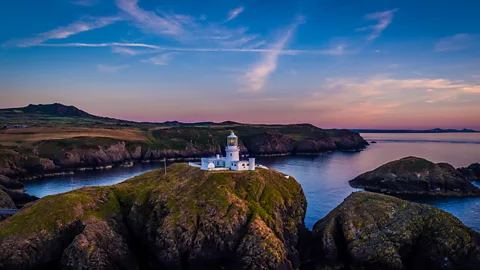 Hawlfraint y Goron/Crown Copyright
Hawlfraint y Goron/Crown Copyright4. Pembrokeshire Coast National Park, Wales
Pembrokeshire isn’t the only UK national park to feature a coastline, but its remarkably varied and dramatic coast was the reason it was designated as a national park. “It’s very rocky, with wonderful limestone sea cliffs,” says Davies. “You can see the tectonic forces that shaped the landscape. You also have beautiful stretches of beach where eggshell sands drift down to turquoise water, like something from Greece or the Caribbean.”
Along this section of Wales’ south coast, there’s evidence of the people that have lived here or passed through across the ages, including “massive megalithic stone monuments, like Pentre Ifan and Carreg Samson, which are around 5,000 years old or more, older than the Pyramids and Stonehenge, similar to monuments found across coastal Europe,” says Davies. Other notable constructions include St David’s Cathedral in St David’s, Britain’s smallest city, and Strumble Head Lighthouse (pictured above), built in 1908, which has fantastic views along the coast.
Pembrokeshire is home to remarkable birdlife, especially the islands of Skomer, Grassholm and Ramsey, which teem with Manx shearwaters, puffins, guillemots, razorbills and gannets, while colourful kelp forests and abundant marine life can be found underwater in rocky coves. The186-mile Pembrokeshire Coast Path National Trail, part of the Wales Coast Path, is an invigorating way to soak up the coastal scenery. Alternatively, you can explore by kayak or take one of the many boat tours to the bird-rich islands.
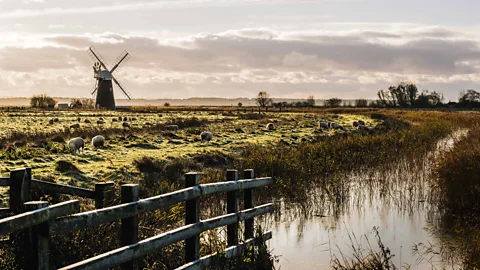 Tom Barrett
Tom Barrett5. The Broads National Park, England
Taking in the Norfolk and Suffolk Broads, The Broads National Park is Britain’s largest protected wetland area. “The Broads is beautiful for its natural richness,” says Davies. “It’s 0.1% of the British land mass but home to a quarter of our rarest wildlife species, including the only breeding population of common cranes, as well as huge populations of over-wintering wild fowl. There are starling murmurations over the reed beds, Norfolk hawker dragonflies flitting over rivers and swallowtail butterflies in the meadows.”
Located in England’s south-east corner, the Broads doesn’t have towering peaks but there’s a special kind of beauty to this vast network of lakes, rivers, fens and marshes and semi-submerged woodland. “The flatness of the landscape in this aquatic labyrinth means it feels very secluded in places,” says Davies. “You can kayak through quiet marshlands and reedbeds, and hear bitterns booming or see otters slinking around. You feel like you’re in England’s version of the Everglades.”
Boating is a popular activity for day trips or longer breaks, with 125 miles of navigable waterways. “There’s a lovely slow place to the Broads,” says Davies. The Broads also has more than 60 old windmills, some, such as Thurne Mill, dating back more than 200 years, which “punctuate the skyline”.
A lovely section of quiet coastline, from Sea Palling to Winterton-on-Sea, also falls within the park’s borders, with a breeding population of grey seals often seen at Horsey.
